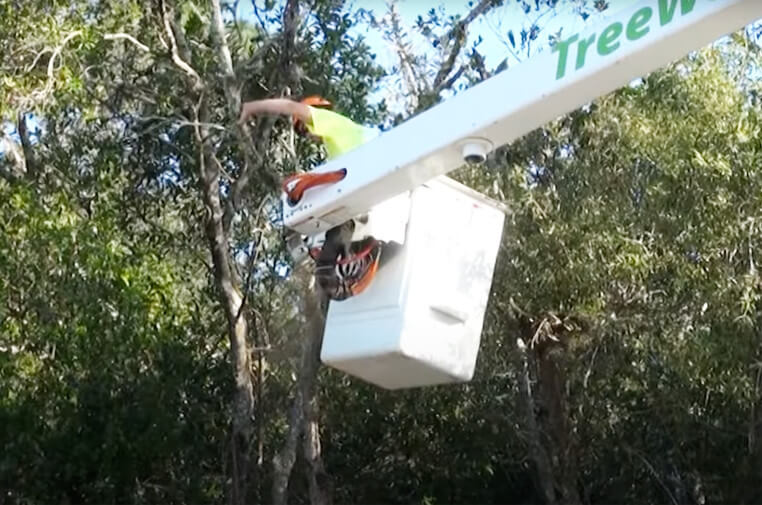
As a tree care specialist and arborist company, one of the most vital skills in our toolbox is the art of pruning. This delicate process, when performed correctly, can lead to healthier, safer, and more beautiful trees. Today, we will delve into the world of structural tree pruning techniques, a subject that has been honed to perfection by the skilled professionals at Tree Work Now. So, brace yourselves, dear readers, for a journey filled with valuable insights, tips, and a touch of fun as we explore the intricacies of tree pruning.
The Basics of Pruning—It’s Not Rocket Science, But It’s Pretty Darn Close!
In the realm of arboriculture, there’s a fine line between a well-pruned tree and a disaster waiting to happen. The secret? Structural pruning. This technique focuses on the tree’s overall framework rather than simply removing branches willy-nilly. Proper structural pruning helps to establish strong branch attachment and reduces the likelihood of future problems such as weak branches, decay, or uneven growth.
To make things simple, remember the 4 Ds of pruning: Dead, Damaged, Diseased, and Deranged. No, we’re not talking about a horror movie—these are the types of branches that need to go. Pruning these branches helps prevent the spread of disease, mitigates potential hazards, and promotes healthy tree growth.
Timing is Everything—When to Make the Cut
You may be itching to prune, but hold on! Timing is crucial. In general, it’s best to prune during a tree’s dormancy period—typically in late winter or early spring before new growth emerges. This minimizes stress on the tree and reduces the chance of infection or pest infestation. However, if you come across one of the dreaded 4 Ds, don’t hesitate to prune it out at any time of year.
Tools of the Trade—Choose Your Weapon Wisely
To prune like a pro, you need the right equipment. This isn’t the time to bust out your favorite butter knife or gardening shears. Here’s a list of pruning tools that will have you feeling like Edward Scissorhands in no time:
- Hand pruners—Perfect for smaller branches up to 1 inch in diameter.
- Loppers—The big brother of hand pruners, designed for branches 1 to 2 inches in diameter.
- Pruning saw—A versatile tool that can tackle branches up to 6 inches in diameter.
- Pole pruner—For those hard-to-reach branches, a pole pruner can extend your reach up to 12 feet or more.
Remember: Keep your tools sharp, clean, and sanitized to avoid spreading diseases between trees. Nobody likes a dirty arborist!
The Art of the Cut—Technique Matters
When pruning, always make clean cuts close to the branch collar without damaging it. The branch collar is the swollen area where a branch meets the trunk or another branch. Avoid leaving stubs or cutting into the collar, as this can cause decay or create weak spots. If you’re dealing with a large branch, use the three-cut method to prevent tearing the bark:
- Make an undercut about 12 to 18 inches from the trunk or branch union, cutting about one-third of the way through the branch.
- Make a second cut about 3 inches beyond the first cut, cutting all the way through the branch. This will remove the weight of the branch.
- Finally, remove the remaining stub by cutting just outside the branch collar.
Pruning Young Trees—A Future Worth Investing In
When it comes to pruning, starting early is key. Training young trees helps establish a strong and healthy structure that will benefit them throughout their lives. By addressing potential issues early on, you can reduce the need for more invasive pruning later, saving time, money, and tree hugs down the line.
Here are a few tips for pruning young trees:
- Prioritize selecting a central leader—this is the main vertical stem of the tree.
- Space branches vertically and radially to ensure even growth and sunlight distribution.
- Remove any competing leaders, rubbing branches, or branches with weak angles.
- Maintain a good balance between the crown and root system—don’t over-prune!
Pruning Mature Trees—Treading Lightly
Mature trees, like a fine wine, require special care. Since they’re less adaptable to change, it’s important to be more conservative when pruning. Here’s how to keep your elderly tree friends happy and healthy:
- Focus on safety and tree health—removing hazardous branches, deadwood, and signs of disease or infestation.
- Avoid removing more than 25% of the foliage in a single pruning session—this can stress the tree and hinder its ability to photosynthesize.
- Steer clear of lion’s tailing, the practice of removing inner branches and leaving foliage only at the ends. This can lead to sunburn, weak branches, and an increased risk of storm damage.
When to Call in the Pros—Because Sometimes, You Need a Hero
While you might fancy yourself an expert pruner after reading this article, there are times when it’s best to leave the job to professionals like Tree Work Now. If a tree requires extensive pruning, is near power lines, or is too large for you to handle safely, don’t hesitate to call in the experts. After all, there’s no shame in admitting that you’re not an arborist superhero!
Structural tree pruning is not just about removing branches—it’s an art form that combines skill, knowledge, and an understanding of tree biology. By mastering the art of pruning, you can help ensure the long-term health and beauty of your trees, creating a vibrant and safe urban forest for all to enjoy. So grab your pruners, channel your inner tree whisperer, and get ready to sculpt your very own arboreal masterpiece!

